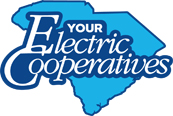Careers
ESSENTIAL QUESTION: What type of jobs are available in the field of energy?
Classroom Resources
Resources By State
North Carolina
Appalachian State University – Provides a wide variety of training courses including a BS & MA degree in Appropriate Technology. This program has a major focus on renewable energy system design & construction and also offers courses on green building, building science, sustainable transportation, biofuels, water & wastewater technology and resource management
North Carolina Solar Center – Clearinghouse for solar and other renewable energy programs, information, research, technical assistance, and training. The Center offers workshops on passive solar design and construction, photovoltaic system design and installation and other related courses. They are also offering a new Renewable Energy Diploma
Georgia
Georgia Institute of Technology – Undergraduate and graduate courses in the field of crystalline-silicon solar cells, both at Georgia Tech and at other Universities through joint research efforts
Southface – Offers courses and training events in a variety of contexts. The formats are varied and range from multi-day workshops on building science; one-day seminars on energy code; to certified Home Energy Rating Systems courses
Connecticut
Connecticut Business and Industry The Career Pathways: Energy and Green Technology teacher’s guide – http://www.cbia.com/edf/documents/CP-Energy-Green-Tech_09.pdf
Show students how to build a solar car:

QUESTIONS TO CONSIDER

OUR THINKING...
High school students are the problem solvers of the future. They are beginning to think about college and career paths. The world needs more of these bright young people pursuing science and energy-related fields so they can help us overcome the challenges of our energy future. In this section, you will find a listing of career and scholarship information.
S.C. College and Career Ready Standards (CCRS)
Physics
Physics
P-PS3-3. Design, build, and refine a device that works within given constraints to convert one form of energy into another form of energy.
Earth Science
E-ESS2-2. Analyze data to make the claim that one change to Earth’s surface can create feedback that causes changes to other Earth systems.
E-ESS2-4. Use a model to describe how causes of short and long-term variations in the flow of energy into and out of Earth’s systems result in changes to climate.
E-ESS3-2. Evaluate competing design solutions that address the impacts of developing, managing, and using Earth’s energy and mineral resources.
ESS3.A: Natural Resources All forms of energy production and other resource extraction have associated economic, social, environmental, and geopolitical costs and risks, as well as benefits.
ETS1.B: Developing Possible Solutions When evaluating solutions, it is important to take into account a range of constraints, including cost, safety, reliability, and aesthetics, and to consider social, cultural, and environmental impacts.
ESS3.C: Human Impacts on Earth Systems The sustainability of human societies and the biodiversity that supports them requires responsible management of natural resources.